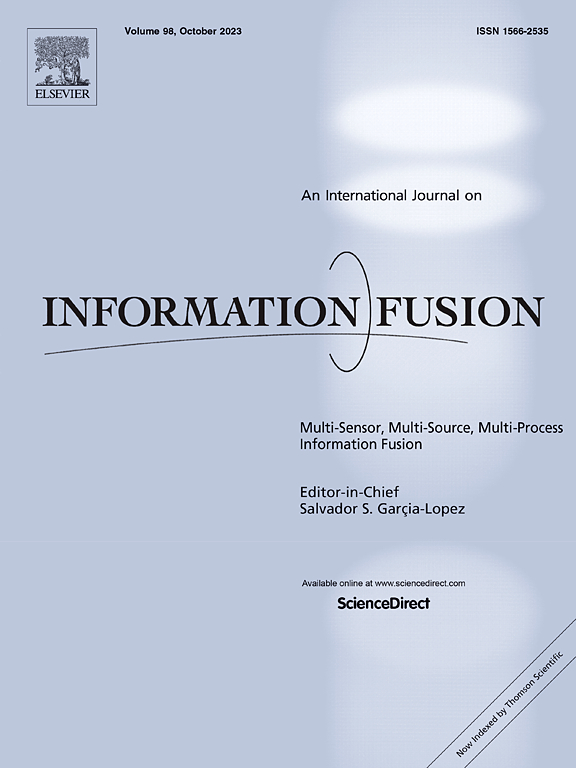Cross-attention among spectrum, waveform and SSL representations with bidirectional knowledge distillation for speech enhancement
IF 14.7
1区 计算机科学
Q1 COMPUTER SCIENCE, ARTIFICIAL INTELLIGENCE
引用次数: 0
Abstract
We have developed an innovative speech enhancement (SE) model backbone that utilizes cross-attention among spectrum, waveform and self-supervised learned representations (CA-SW-SSL) to integrate knowledge from diverse feature domains. The CA-SW-SSL model integrates the cross spectrum and waveform attention (CSWA) model to connect the spectrum and waveform branches, along with a dual-path cross-attention module to select outputs from different layers of the self-supervised learning (SSL) model. To handle the increased complexity of SSL integration, we introduce a bidirectional knowledge distillation (BiKD) framework for model compression. The proposed adaptive layered distance measure (ALDM) maximizes the Gaussian likelihood between clean and enhanced multi-level SSL features during the backward knowledge distillation (BKD) process. Meanwhile, in the forward process, the CA-SW-SSL model acts as a teacher, using the novel teacher–student Barlow Twins (TSBT) loss to guide the training of the CSWA student models, including both lite and tiny versions. Experiments on the DNS-Challenge and Voicebank+Demand datasets demonstrate that the CSWA-Lite+BiKD model outperforms existing joint spectrum-waveform methods and surpasses the state-of-the-art on the DNS-Challenge non-blind test set with half the computational load. Further, the CA-SW-SSL+BiKD model outperforms all CSWA models and current SSL-based methods.
基于双向知识蒸馏的频谱、波形和SSL表示交叉关注语音增强
我们开发了一种创新的语音增强(SE)模型主干,它利用频谱、波形和自监督学习表示(CA-SW-SSL)之间的交叉关注来整合来自不同特征域的知识。CA-SW-SSL模型集成了跨频谱和波形注意(CSWA)模型来连接频谱和波形分支,以及双路径交叉注意模块来选择自监督学习(SSL)模型的不同层的输出。为了处理SSL集成日益增加的复杂性,我们引入了一个双向知识蒸馏(BiKD)框架来进行模型压缩。提出的自适应分层距离度量(ALDM)在反向知识蒸馏(BKD)过程中最大化了干净和增强的多层次SSL特征之间的高斯似然。同时,在正向过程中,CA-SW-SSL模型充当老师的角色,使用新颖的师生巴洛双胞胎(TSBT)损失来指导CSWA学生模型的训练,包括生活版和微型版。在DNS-Challenge和Voicebank+Demand数据集上的实验表明,CSWA-Lite+BiKD模型优于现有的联合频谱波形方法,并且在DNS-Challenge非盲测试集上以一半的计算负荷超过了最先进的方法。此外,CA-SW-SSL+BiKD模型优于所有CSWA模型和当前基于ssl的方法。
本文章由计算机程序翻译,如有差异,请以英文原文为准。
求助全文
约1分钟内获得全文
求助全文
来源期刊

Information Fusion
工程技术-计算机:理论方法
CiteScore
33.20
自引率
4.30%
发文量
161
审稿时长
7.9 months
期刊介绍:
Information Fusion serves as a central platform for showcasing advancements in multi-sensor, multi-source, multi-process information fusion, fostering collaboration among diverse disciplines driving its progress. It is the leading outlet for sharing research and development in this field, focusing on architectures, algorithms, and applications. Papers dealing with fundamental theoretical analyses as well as those demonstrating their application to real-world problems will be welcome.
 求助内容:
求助内容: 应助结果提醒方式:
应助结果提醒方式:


